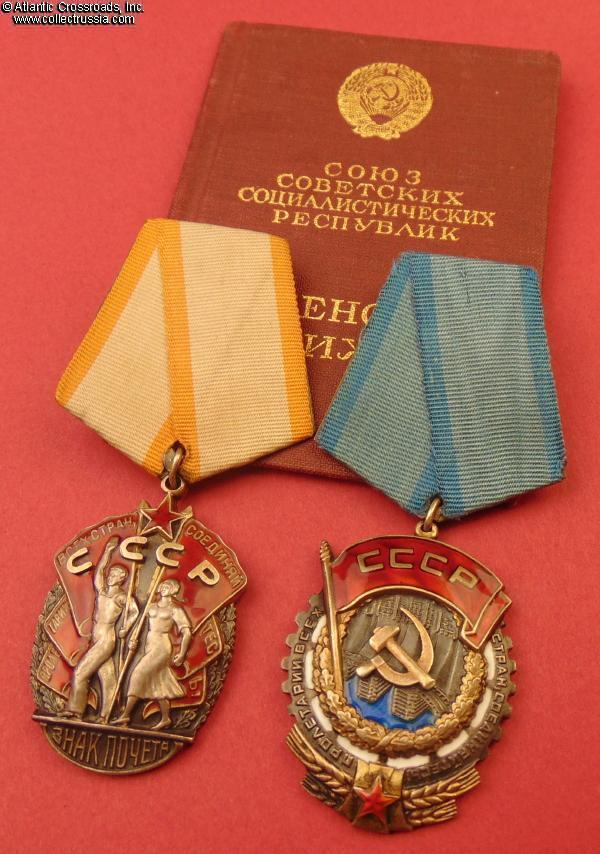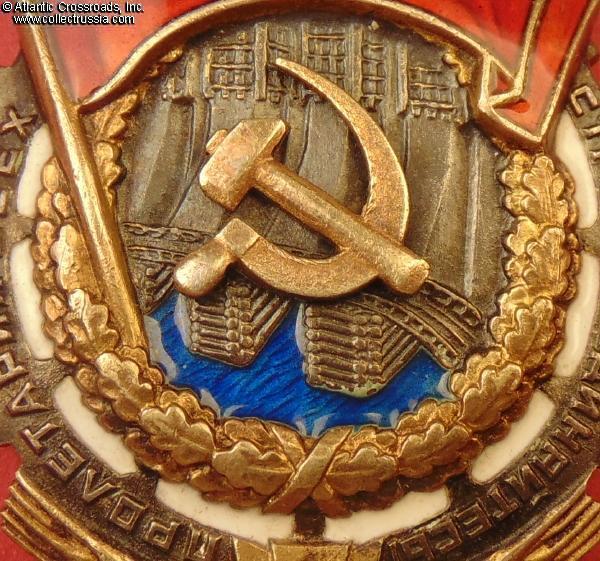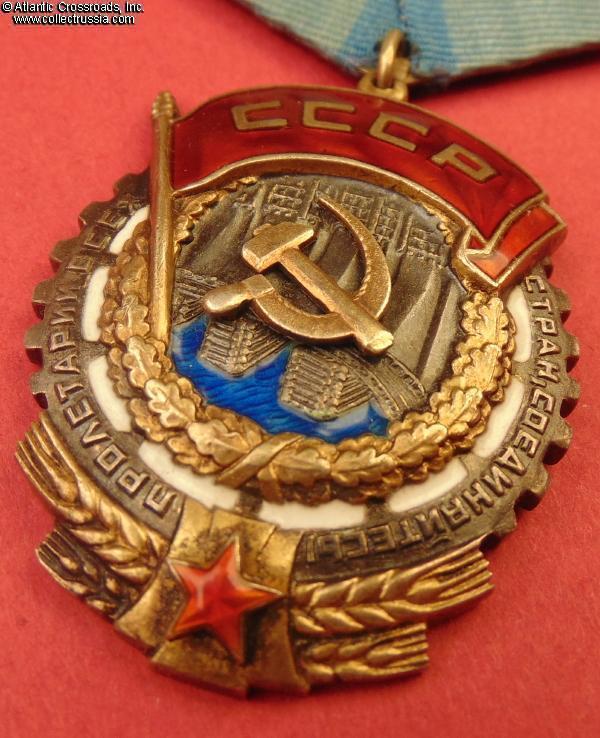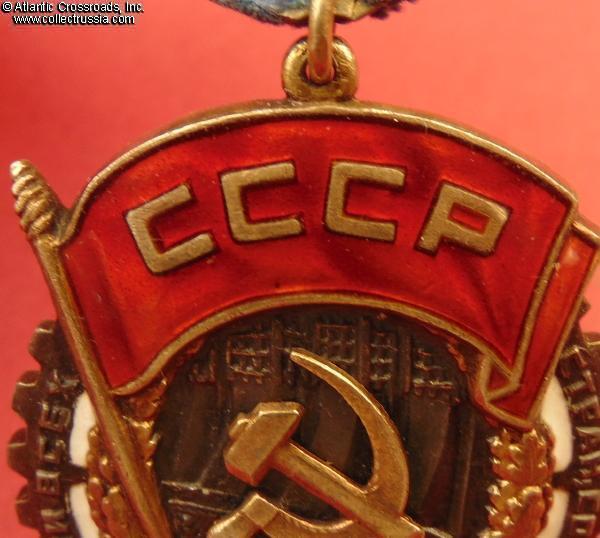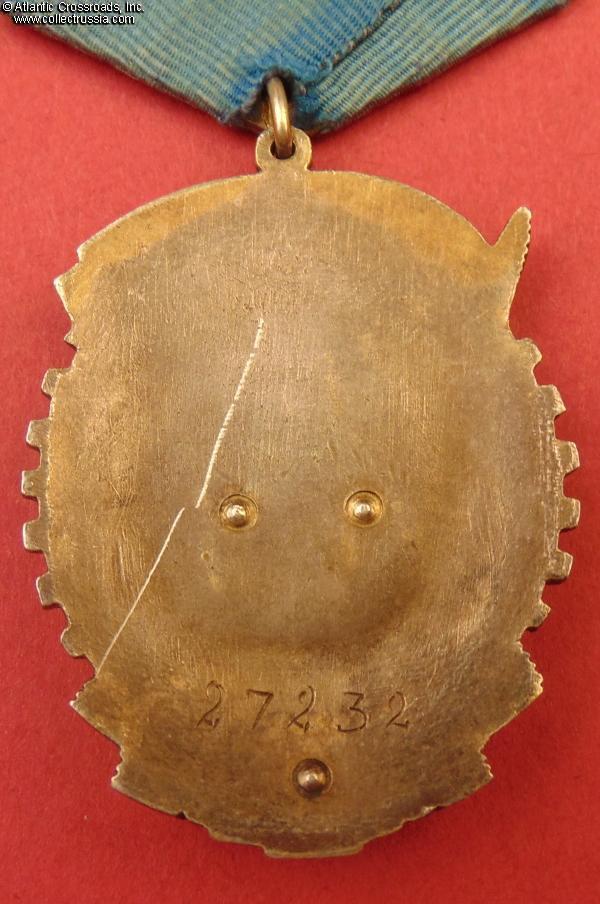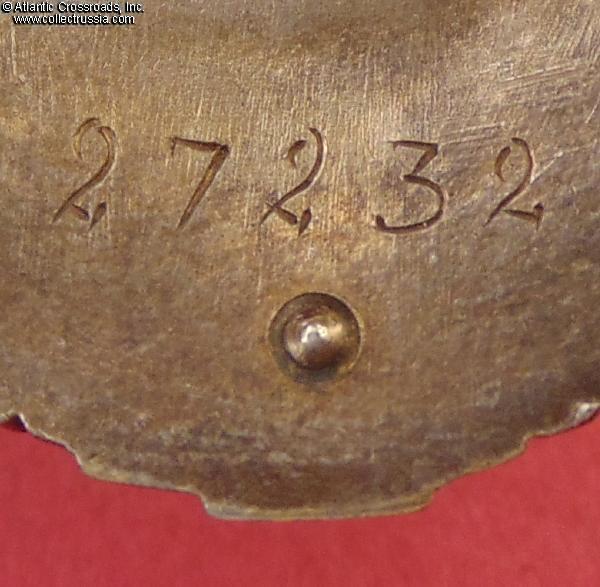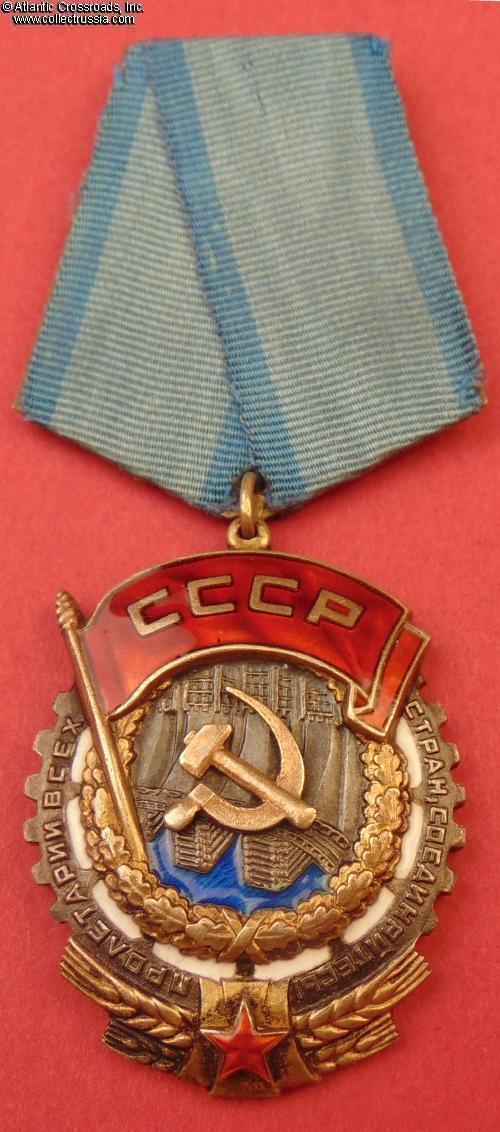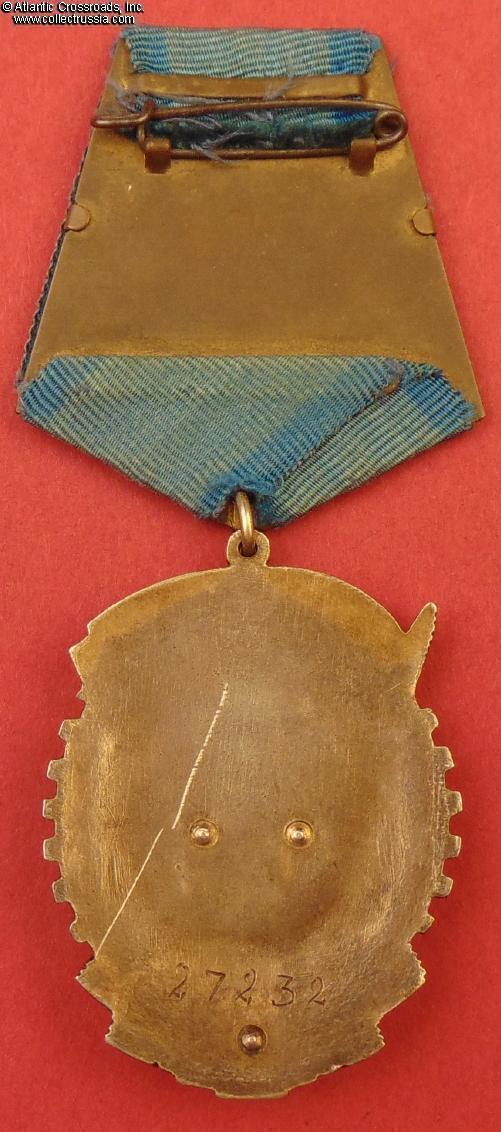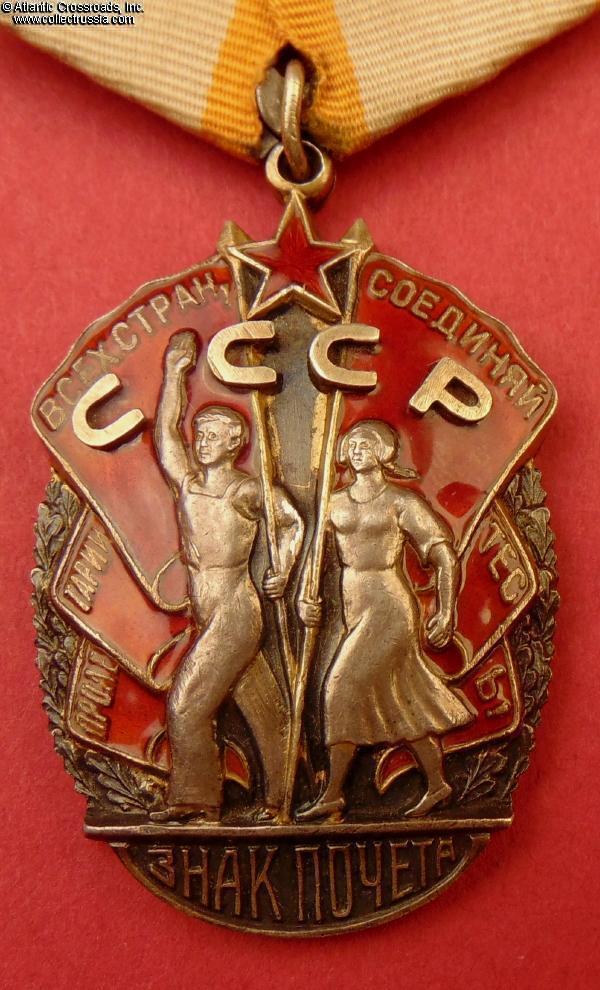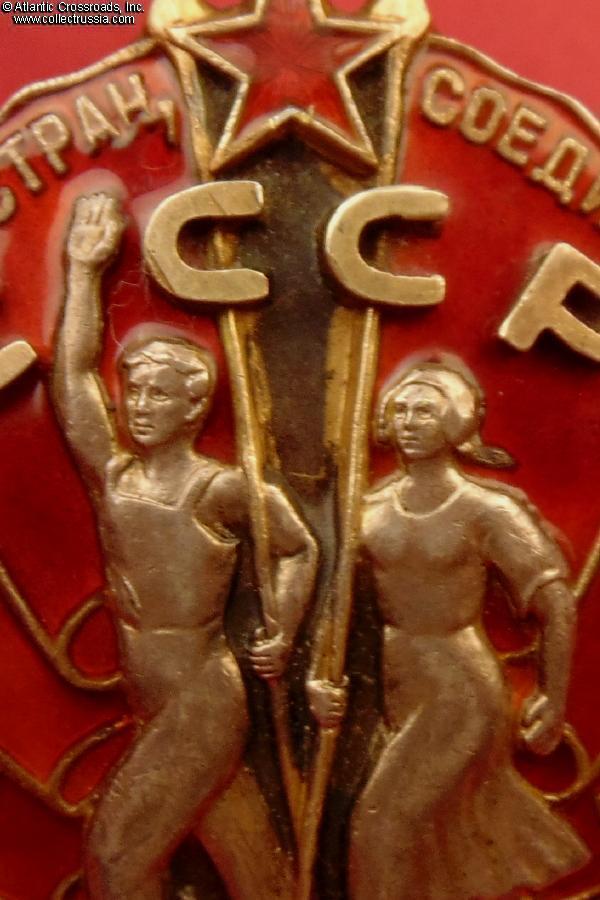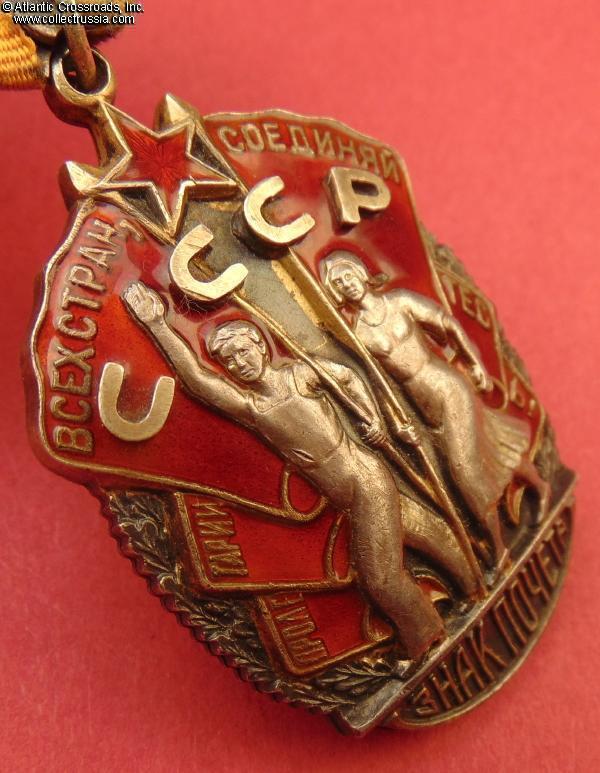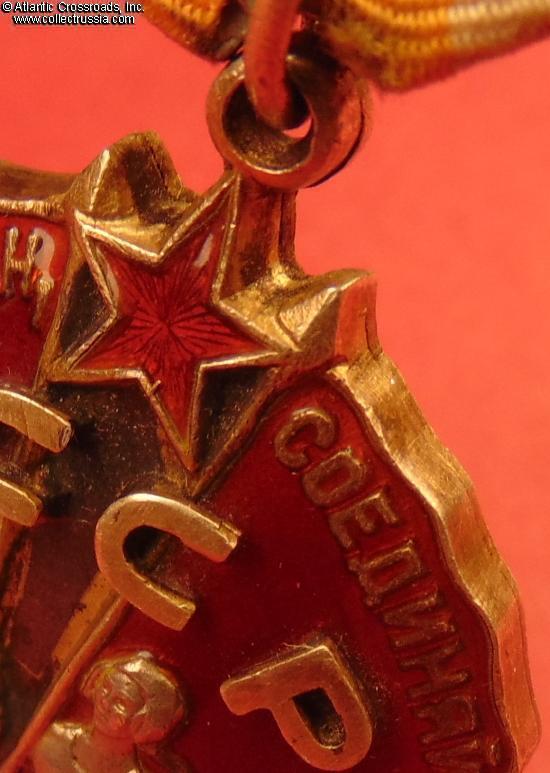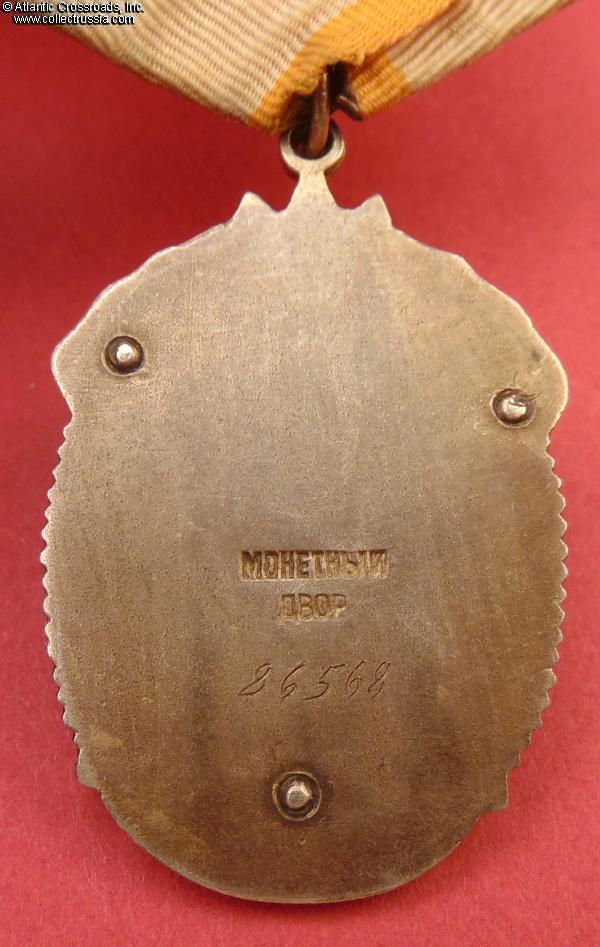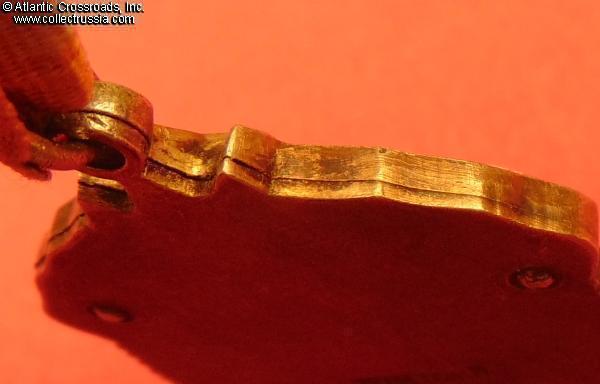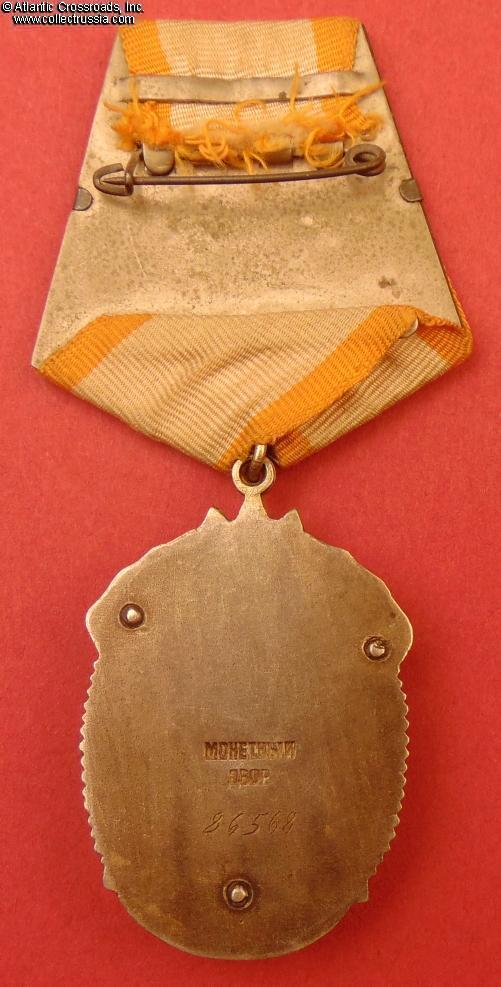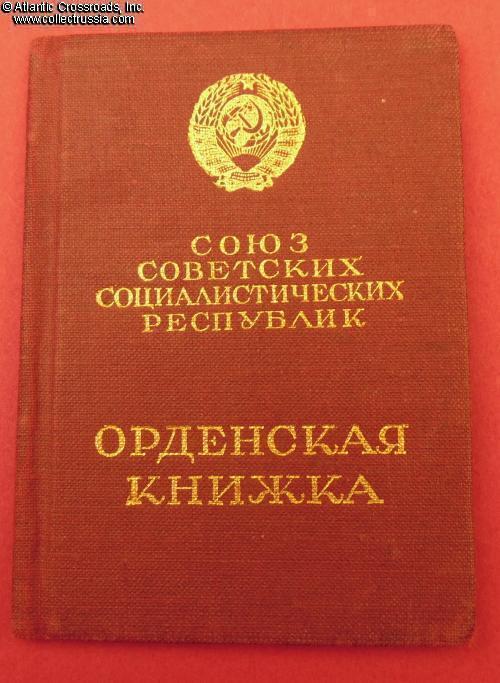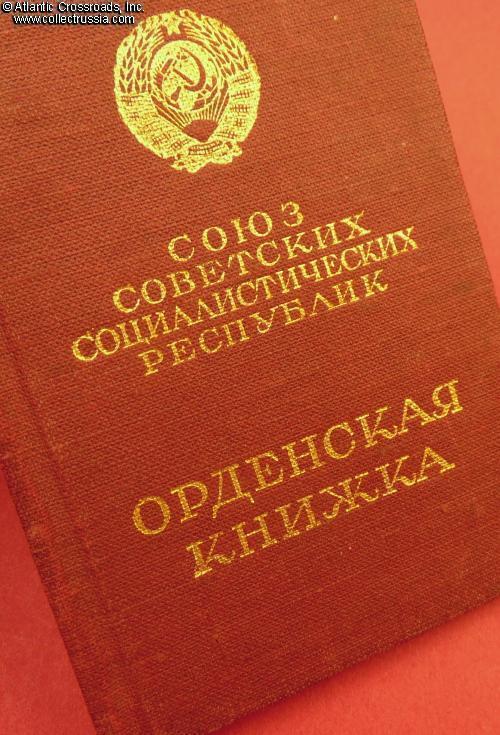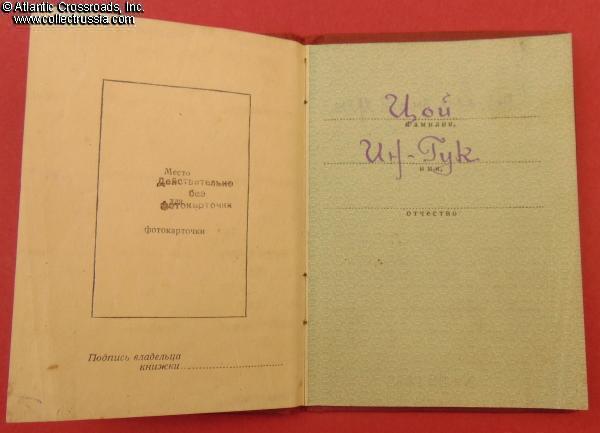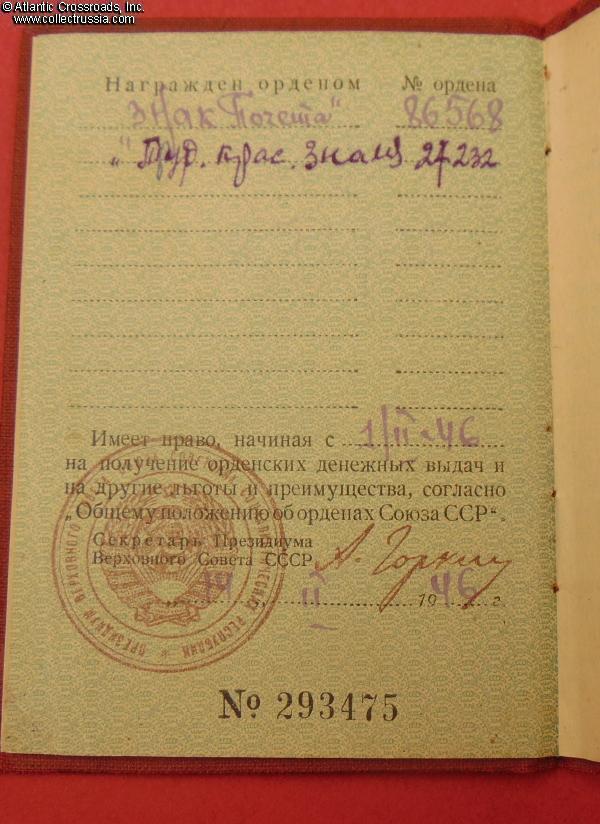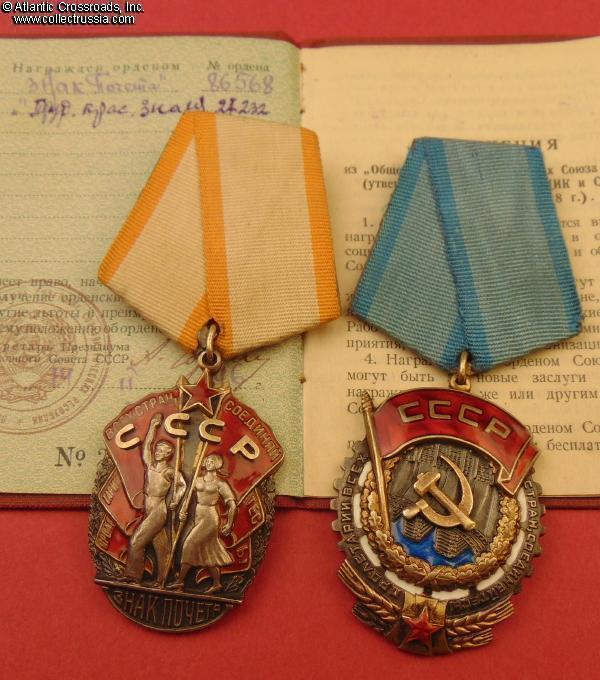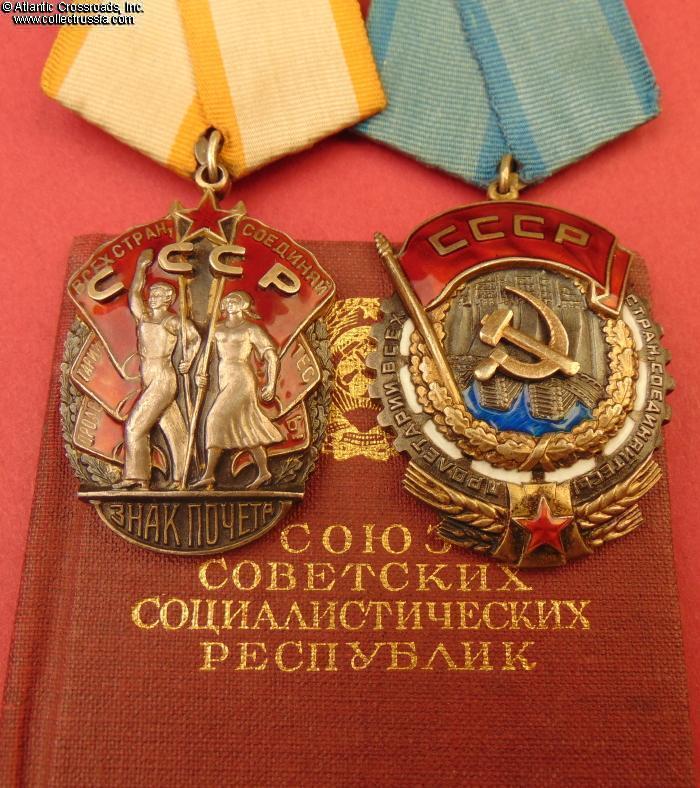
Documented Group of Two Decorations to In-Guk Tsoi, 1940s.
Order of the Red Banner of Labor, Type 3 "jumbo" (according to McDaniel classification), variation without a mint mark, #27232, circa 1946-47 issue. Silver gilt, enamels; measures 50.6 mm in height (incl. eyelet), 37.8 mm in width. This piece is among the earliest suspension type Red Banners of Labor manufactured after the 1943 transition from the screw back type. Like some of the other such specimens, especially in the 27000 serial number range, it has no mint mark - a characteristic feature of 1943 transitional specimens of several Soviet decorations.
Order of the Red Banner of Labor, Type 3 "jumbo" (according to McDaniel classification), variation without a mint mark, #27232, circa 1946-47 issue. Silver gilt, enamels; measures 50.6 mm in height (incl. eyelet), 37.8 mm in width. This piece is among the earliest suspension type Red Banners of Labor manufactured after the 1943 transition from the screw back type. Like some of the other such specimens, especially in the 27000 serial number range, it has no mint mark - a characteristic feature of 1943 transitional specimens of several Soviet decorations. The Mondvor.narod.ru classifies it as a separate distinct variation, namely Type 3 Variation 1. A very scarce and interesting version.
In outstanding, excellent condition. The obverse is literally perfect, with flawless enamel, pristine details and beautifully preserved bight gilt finish. The banner in particular is free of even microscopic contact marks that could be found under 10x magnification. The reverse has a single diagonal scratch, otherwise perfect and shows very attractive patina to silver. Comes on original suspension, a WW2 two-layer model in brass with self-locking pin. The old, probably original ribbon is beautifully preserved and clean. The connecting link likewise appears to be original, and its ends are still joined with solder in the characteristic seamless manner of the Soviet mint.
Order of the Badge of Honor, Type 3, Variation 1 "flat back", #86568, January 1946 issue. Silver gilt, enamels; measures 50.2 mm in height (incl. eyelet), 32.8 mm in width; weighs 35.5 g not including the suspension and connecting link. This is one of the few very early post-war examples of this labor decoration featuring relatively high position of the lower rivet. The mint mark is about 8.5 mm wide, and its two words are struck separately. According to the Mondvor.narod.ru classification, this is Type 3, Var. 3 with the currently known serial number range of approximately 58000 through 99000.
In outstanding, excellent condition - almost extraordinary for an award of the first post-war year. The enamel is perfect, free of even the tiniest contact marks, and shows magnificent luster. The details of the artwork are pristine. There is very attractive patina to silver, while the fire gilt finish on the letters is still clearly visible. Includes original suspension device, WW2 two-layer model in steel with self-locking pin. The ribbon is old but beautifully preserved and clean. The connecting link appears to be original and its ends are still joined with solder.
Order Booklet, issued on 14 February 1946. The Order of the Badge of Honor was the first entry, while the Red Banner of Labor was added to the document shortly thereafter as was customary at the time (we have no doubt that the second entry is original and guarantee it). Judging by the 1 February 1946 date of the start of special privileges, the first decoration - in this case, the Badge of Honor - was bestowed in January 1946 which makes it one of the earliest post-war issues. The two orders above are the only decoration listed in the document thus technically making it a complete group (although we don't know if the recipient won any other decorations later on that could come with separate documents).
The document is in superb condition. The cover shows no significant wear or fading, and the gold impression of the state emblem and writing is exceptionally bright. The binding is tight; the internal pages are perfectly clean and crisp.
Note that both the recipient's first name In-Guk and last
name Tsoi are distinctly Korean. In all likelihood, he was
one of the thousands of Soviet citizens of Korean ethnicity
who were on Stalin's orders deported from their native Far
East in the late 30s and forcibly resettled in the arid and
inhospitable areas of Soviet Central Asia (despite their
sufferings, they not only survived, but kept their cultural
heritage, eventually became relatively prosperous by the
Soviet standards, and even won renown for high-quality
produce they delivered to markets throughout the USSR late
in the Soviet era). There is also a possibility, albeit less
likely, that Tsoi was a citizen of North Korea who worked
with the Soviets on some important joint project. Although
currently we have no information on the recipient beside his
name, it is entirely possible that details of his biography
may become available in the future with the gradual opening
of the Russian archives. This excellent group therefore has
a very significant research potential!
$2,400.00 Add to cart

